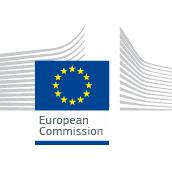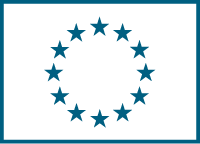
Intelligent asset management finalisation - S2R-CFM-IP3-01-2019
Deadline: Jun 18, 2019
CALL EXPIRED
CALL EXPIRED
Construction Industry
Innovation
Transport
Urban transport
Horizon Europe
Industrial Engineering
SPECIFIC CHALLENGE
Approximately 25% of the annual operational cost of High Speed infrastructure is generated by maintenance28, due to different causes: the age of the current rail infrastructure, accelerated deteriorations, inspection activities done manually or with a series of heterogeneous monitoring tools and systems.
The challenge is to move forward the research activities currently under development in the IN2SMART project, by finalizing, testing and validating the Intelligent Asset Management System, in order to optimize railway infrastructure maintenance. Using a limited budget, it is possible to contribute to the S2R objectives, through the usage of new technologies concerning data acquisition (preferably COTS monitoring), data analysis (big data analytics) and maintenance decision making, logistics and execution. This has to be demonstrated in some selected use cases context, but also in a more comprehensive demonstrator.
SCOPE
Having regard to the Union policies and targets on decarbonisation, taking into consideration that automation and digitalization are key enablers of a drastic railway system transformation, in order to tackle the challenges described above, the proposed activities should address all work streams, in line with the Shift2Rail Multi-Annual Action Plan (MAAP):
The work expected in the work stream 1 concerning “Railway Integrated Measuring and Monitoring System (RIMMS)” (TD3.7) should provide:
-
In field validation of a track and switch & crossing geometry monitoring on board system (TRL6/7). The starting point is the development of an on-board COTS based geometry monitoring system at TRL 4/5 (IN2RAIL and IN2SMART), taking also into account the relative outcome of the project ASSETS4RAIL (GA 826250);
-
In field validation of a rail thermal stress monitoring on board system (TRL 5/6). Starting point is the definition of an on-board COTS based temperature monitoring system at TRL 3/4 and the definition of an innovative non-intrusive method for measuring rail stress free temperature (IN2RAIL);
-
In field validation of monitoring from unmanned autonomous vehicles approach (TRL5/6). Starting point is the definition of relevant use cases and their testing up to TRL 3/4 to be used as a feasibility study for the expected work (IN2SMART);
-
In operation validation of a generic framework for monitoring of an existing and a new signalling system, providing recommendations and a risk mitigation analysis of the impact on the safety case (TRL6/7). Starting point is the development of a seamless proxy for retrieving signalling information and its testing in a TRL 3/4 environment (IN2SMART), taking also into account the relative outcome of the project ASSETS4RAIL (GA 826250);
- Wayside installation and in-operation validation of a monitoring system of the rolling stocks impact on the infrastructure. (TRL6/7). Starting point is the definition of relevant parameters and development of monitoring systems for video monitoring, wheel-rail interaction measurements and vehicles identification done in the project IN2SMART, taking also into account the relative outcome of the project ASSETS4RAIL (GA 826250).
The work expected in the work stream 2 concerning “Dynamic Railway Information Management System (DRIMS)” (TD3.6) should provide operation validation of:
-
An open standard interface for maintenance applications focused on these categories: data model, data format, data transfer and security (TRL6/7). The starting point of this activity is the standards selection for each category done in the projects IN2RAIL and IN2SMART;
-
Analytic tools for automatic detection of anomalies (TRL6/7). The starting point of this activity is the definition of relevant use cases and the development of an anomaly detection system prototype done in the prject IN2SMART;
-
Analytic tools predicting railway assets decay towards prescriptive analytics for maintenance (TRL6/7). The starting point of this activity is the definition of relevant use cases and the development of predictive models of railway assets decay (IN2RAIL WP9, IN2SMART WP8);
-
Analytic tools discovering and describing the maintenance workflow process (TRL5/6). The starting point of this activity is the prepared, cleaned and organized data recorded during maintenance processes done in the project IN2SMART;
-
Data Analytics Architecture (Communication Layer + Data Platform) (TRL6/7). The starting point of this activity is the implementation of In-Lab demonstrators for data exchange (both for analytics input and for analytics output) meeting the defined standards done in the projects IN2RAIL and IN2SMART.
The work expected in the work stream 3 concerning “Intelligent Asset Management Strategies (IAMS)” (decision support systems and planning tools for predictive maintenance) (TD3.8) should provide:
- In field validation of decision support tools for long, mid- and short-term maintenance planning. The starting point is the work of IN2SMART:
- generation robot platform. Technology can be shown on the actual robot platform itself or on existing machines and equipment improving their performance (for e.g. using of remote control technology will increase efficiency and safety) based on work of IN2SMART;
-
In field demonstration of lean inspection and maintenance procedures including predictive approaches and combined maintenance activities based on the work of IN2SMART; demonstration of the benefits of a system approach, including root cause analysis, LCC and RAMS analysis;
- Work should possibly include solutions focussing on possession management and work site management systems, optimised working methods, strategies or processes, etc. Data analytics approaches should be demonstrated to show how a control centre view of the overall infrastructure, combined with access to long and mid-term maintenance decisions, can be integrated with operational planning.
All Activities are expected to finish with technologies demonstrated/validated in a TRL6/7 environment as a continuation of work already conducted in previous projects (IN2SMART). In case of new work, it should be considered to build upon technologies found in the market which can be easily integrated in existing work and demonstrated at a high TRL level (5/6 minimum).
Work Stream esults should be placed in the context of the demo plans, which are developed in conjunction with MAAP part B. In addition, the demo plans should be accompanied with integration and migration plans to implement produced solutions in the rail environment to support and speed up deployment.
Considering the “18C044-0C WHITE PAPER REFERENCE CCS ARCHITECTURE (RCA) BASED ON ERTMS” developed by the ERTMS Users Group and the EULYNX consortium and provided to S2R in July 2018, and following the ongoing collaboration initiated with the promoters of such initiative for the
the detailed description of the framework for the IAMS process (the guiding principles of predictive, risk- and condition-based, opportunistic, reliability-centred, integrative maintenance decision support and the "building blocks" of the IAMS process, their respective functionalities and interaction, the workflow and the flow of information within the framework) and use cases;
In field demonstration of maintenance tools – using technology applicable for the next integration of the RCA in the S2R Programme, a final high level decomposition of RCA is expected be delivered to S2R by April 2019. The S2R Members should firstly verify the impact that the RCA would have or potentially have on the content of each work streams activities and subsequently each CFM proposal should be aligned, as far as possible, against the latest progress on the Reference CCS Architecture, in particular the system approach and interoperability of solutions must be ensured across S2R IP/CCA activities and for future developments.
COMPLEMENTARITY
As specified in section 2.3.1 of S2R AWP for 2019, in order to facilitate the contribution to the achievement of S2R objectives, the options regarding 'complementary grants' of the S2R Model Grant Agreement and the provisions therein, including with regard to additional access rights to background and results for the purposes of the complementary grant(s), will be enabled in the corresponding S2R Grant Agreements.
The action that is expected to be funded under this topic will be complementary to the actions that are expected to be funded under the following topics:
S2R-CFM-IPX and /CCA-01-2019: S2R System Architecture and Conceptual Data Model. The action stemming from this topic will also be complementary to actions carried out within the following projects of IP3 and IP1:
- IN2SMART (GA 730569)
- PIVOT (GA 777629)
The action shall actively contribute to the S2R standardisation rolling development plans wherever relevant.
The action shall actively contribute to the S2R KPIs development. This shall lead to publicly available deliverable, quantified indicatively on a semi-annual basis.
The planned activities of the action should take into account the revised MAAP part A. The S2R JU will only fund one proposal under this topic.
EXPECTED IMPACT
Actions will contribute to achieve an increase in the attractiveness and competitiveness of the railway transport in Europe through an efficient, safe, intelligent infrastructure maintenance approach.
Expected impacts are the following:
-
Increase in operational reliability (less service disruptions and decrease of 50% of avoidable incidents) through continuous and precise condition monitoring of key components predicting failures in advance and scheduling preventive maintenance actions during regular possessions or, in the worst case, outside peak hours, leading towards zero avoidable failures.
-
Improvement in cooperation between different stakeholders in the supply chain, such as Infrastructure Managers, Railway Undertakings, Service Providers and Suppliers, etc. through the definition of standard open interfaces to access heterogeneous multi-owner maintenance-related data with the adequate degree of privacy, security and quality.
-
Reduction of maintenance cost and complexity of maintenance processes and optimize maintenance execution thanks to (prescriptive) maintenance planning support systems, LCC reduction and less personnel involved in monitoring activities:
- o Optimize maintenance execution by reducing the number of needed possessions by 50%
- o Reducing maintenance cost by optimised planning by 30 to 50%
-
Increase of the target capacity of the network by 10% through a modern and more cost- effective approach to predictive maintenance
-
Reduction of rolling stock maintenance & repair costs thanks to the improved maintenance of the infrastructure
- Homogenization and simplification of maintenance by identification and removal of most impacting root causes making use of condition based monitoring and analytics methods
Type of Action: Innovation Action (IA)
Public link: Only for registered users
 EC - Horizon Europe
EC - Horizon Europe


Please Log In to See This Section